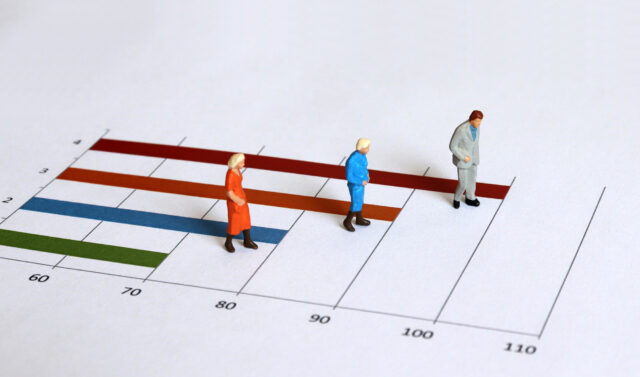
Why are White Americans’ Deaths Rising?
Rarely does academic research make a splash with the general public like this did. A grim 2015 study, prominently displayed in The New York Times, showed death rates increasing among middle-aged white Americans and blamed so-called “deaths of despair” like opioid addiction, suicide, and liver disease.
Rising mortality, especially for white people with low levels of education, ran counter to the falling death rates the researchers found for Hispanic and black Americans. The husband and wife team who did the study proposed that “economic insecurity” might be an avenue for research into the root cause of white Americans’ deaths of despair.
A 2018 study took up where they left off and found a connection between economic conditions and some types of deaths. Researchers from the University of Michigan, Claremont Graduate University, and the Urban Institute said poor economic conditions – in the form of local employment losses – have played a role in the rising deaths since 1990 from chronic health problems like cardiovascular disease, particularly among 45 to 54 year olds with a high school education or less. However, they could not establish a connection to the rise in deaths of despair.
In a 2019 study in the Journal of Health and Social Behavior, these same researchers instead focused on what is driving the growing educational disparity in life expectancy trends among whites: life expectancy is rising for those with more education but stagnating or falling for less-educated whites.
As for the health reasons behind this, they found that chronic conditions like cardiovascular disease and even cancer are critical to explaining less-educated whites’ life expectancy, and they warned against putting too much emphasis on deaths of despair. In the medical literature, they noted, cardiovascular disease, and some cancers are consistently linked to the “wear and tear” on the body’s systems due to the stress that disadvantaged Americans experience over decades, because they earn less and face adversities ranging from a lack of opportunities and inadequate medical care to substandard living environments.
The study concluded that “stress-related chronic disease risks may have grown among the less educated, including in response to growing economic hardship and social inequity.”
To read the first study, authored by John Bound, Arline Geronimus, Timothy Waidmann, and Javier Rodriguez, see “Local Economic Hardship and its Role in Life Expectancy Trends.” Their second paper appears in the current issue of the Journal of Health and Social Behavior.
Some of the research reported herein was performed pursuant to a grant from the U.S. Social Security Administration (SSA) funded as part of the Retirement Research Consortium. The opinions and conclusions expressed are solely those of the author(s) and do not represent the opinions or policy of SSA or any agency of the federal government. Neither the United States Government nor any agency thereof, nor any of their employees, makes any warranty, express or implied, or assumes any legal liability or responsibility for the accuracy, completeness, or usefulness of the contents of this report. Reference herein to any specific commercial product, process or service by trade name, trademark, manufacturer, or otherwise does not necessarily constitute or imply endorsement, recommendation or favoring by the United States Government or any agency thereof.
Comments are closed.







Poverty and poor health are inexorably linked. The poor tend to have poorer diets, less access to health care, less opportunity to exercise and greater stress. See my blog post at What’s Wrong with Health Care in America? for more details. One reason American health outcomes are so much worse than those of comparable Western democracies despite much higher spending is that they put more spending, relatively, into social supports.
Poverty and poor health are inexorably linked. The poor tend to have poorer diets, less access to health care, less opportunity to exercise and greater stress. See my blog post at What’s Wrong with Health Care in America? for more details. One reason American health outcomes are so much worse than those of comparable Western democracies despite much higher spending is that they put more spending, relatively, into social supports.
So less educated people sadly have lower incomes and some jobs they hold do not carry health insurance. Furthermore, out-of-pocket costs are through the roof for health care and total yearly costs at $3.7 TRILLION per year or twice what any other European country pays with no better outcomes. Even tax laws passed by Congress favor wealthy incomes, per Joseph Stiglitz an eco professor at Columbia and a Nobel prize winner, i.e. capital gains tax at 20% on stocks held greater than a year. Also the top 10% of income earners hold 84% of US stocks. Although I come from a well-educated family most with PhD’s from the best schools in the world, I believe the system is totally rigged against the middle class. Eventually, it will destroy the capitalistic system in the US without dramatic changes because wealth and power will be held by the very few.
Life expectancy is rising among those now 60 and over and falling for everyone born later.
That reflects the average economic, social and family circumstances those now 60 an over inherited from their parents.
And passed on to their children.
And it’s going to get worse.
Life expectancy isn’t falling for non-whites under 60, perhaps because they never had it so good to begin with.